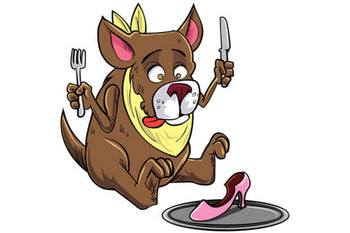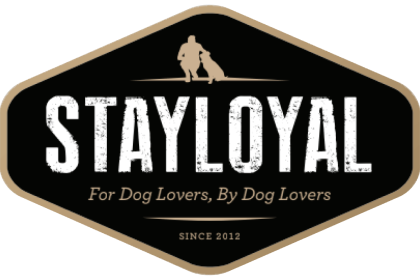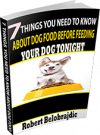More Life For Your Dog?

6 Surprising Protein Facts
That Can Add Years To Your Dog’s Life
And Save You Money!
Scientists, Canine Nutritionists, Veterinarians agree…
Dietary protein is essential to your dog’s health
But did you know that protein can add years to your dog’s life?
Or the surprising reasons why?
Read on to discover what your dog is depending on you to know about protein:
- Crucial facts about your dog’s protein needs
- Why protein source inevitably affects protein quality
- What to look for when you’re shopping for dog food
Let’s get started with…
Protein Fact #1: Amino Acids:
Protein is the most abundant molecule in your dog’s body. It is made up of one or more amino acids. Amino acids are the individual building blocks that make up your dog’s muscles, tendons, ligaments, skin, hair, nails, organs, enzymes, hormones, antibodies and more.
There are two groups of amino acids.
- A) Essential Amino Acids: These must be supplied by the diet, because they are not made by the body.
- B) Non-Essential Amino Acids: These are made by the body, if there are enough “building materials” available. And this only happens with a balanced
So, your dog must get enough protein from his dog food to allow his digestive system to extract the amino acids. His body then uses them to rebuild, repair or replace various cells.
Here’s what that means: A strong immune function, appetite, weight maintenance, tissue health and shiny coat are all directly related to your dog taking in sufficient protein from his dog food.
So, how much protein are we talking? Let’s find out in …
Protein Fact #2: The Protein Percentage
In a research study, sled dogs were fed diets of 16, 24, 32, and 40% protein. None of the dogs on the 16% protein food made it through the training season without at least one injury serious enough to remove them from training.
Remarkably, dogs fed the 32% and 40% protein foods had no injuries!
Implication? A high protein dog food can reduce injuries in your dog.
- If your dog food indicates it has less than 28% protein, this is inadequate.
- Optimal protein percentages are between 28-40%. Be sure to check the quantity on the label.
Protein Fact #3: Protein Source, Quality and Digestibility
Not only should you pay attention to protein percentage, but also the protein type.
Companies selling low-budget dog food products would have you believe that all forms of protein are created equal. Not true.
Quite simply, cheaper sources of protein are not absorbed well by your dog’s digestive system. And protein not properly digested and absorbed delivers zero value to your dog!
Adding insult to injury, poor quality proteins also have an incomplete amino-acid profile.
Although dogs can survive on plant based protein, like soybeans and corn gluten, they absolutely thrive on animal-based sources like chicken, lamb and fish.
Protein Fact #4: Beware Crude Protein
It’s important to note that the term “crude protein” in a dog food’s Guaranteed Analysis, means there is no statement to the digestibility of this protein.
Protein comes in many forms — even shoe leather, chicken feathers or cow hooves have a fairly high crude protein content!
In the digestive process, the body would be able to extract and process very little of it — and at the price of a lot of digestive stress.
A favourite amongst dog food manufacturers as a cheap protein booster is corn gluten meal, a by-product of the human food processing industry.
In effect, it’s the left-overs from the manufacture of corn starch and corn syrup.
Corn gluten meal has a crude protein content of 60%, so theoretically even if your food recipe contained no other protein sources at all, you could make a food with a 20% crude protein content by mixing it 1:2 with some cheap carb source!
This fact alone illustrates how critical it is for dog owners to understand the finer details of the dog food they’re feeding their little friends.
Animal Nutritionist and protein expert, Sabine Contreras, puts it this way:
“Digestibility is more important than the actual protein content of the product because the amount of digestible protein is what counts for proper nutrition, not the amount of “crude” protein.
What would you rather feed? A food with a protein content of 30% that is 60% digestible, or one with a protein content of 22% that is 95% digestible?”
Protein Fact #5: 12 Impacts of Protein-Quality On Dog Health…
<
High quality proteins vs low quality proteins in dog food has a huge impact on the health of your dog.
Here’s a comparison table to illustrate the benefits and dangers of high and low-quality protein. The facts may surprise you:
|
High Quality Protein: Sources: eggs, muscle, organ meats, animal based: chicken, lamb, fish. |
Low Quality Protein Sources: grains, corn, corn gluten meal, soy, other vegetables based. |
|
| 1 | Healthy appetite | Decreased appetite |
| 2 | Superior amino acid balance | Deficient amino acid balance |
| 3 | Healthy growth | Poor growth |
| 4 | Low incidence of injury | Injury prone |
| 5 | Resulting weight stability | Resulting weight loss |
| 6 | Shiny coat | Rough and dull coat |
| 7 | Improves immune function | Decreased immune function |
| 8 | Easy to digest | Difficult to digest |
| 9 | Low nutrient to waste ratio | Generates large amount of waste |
| 10 | Low stool count | Larger stool count |
| 11 | Kidney stress | |
| 12 | Lower reproductive performance |
Protein Fact #6: Addressing Your Frequently Asked Questions
Of course, there’s a kibble-mix of views out there, and a great deal of misunderstanding.
To keep you from getting in a twist about dog food protein, Animal Nutritionist Sabine Contreras gives answers to the most commonly asked questions:
Q: What happens if I feed my dog too much protein?
A: When you feed your dog more protein than he needs, the extra protein is metabolised and used for energy.
Unlike fat, excessive protein is not stored as such in the body, but once the demand for amino acids is met and protein reserves are filled, protein energy could be used for the production of fat.
Q: I read that too much protein will cause hyperactivity in my dog. Is this true?
A: There is absolutely no scientific evidence that high protein diets cause dogs to get “hyper.” There are no biochemical or nutritional factors that support this.
Hyperactivity is really myth #1
Q: Would too much protein cause my dog to become aggressive?
A: Again, there is zero evidence to support the claim that high protein diets cause dogs to become “aggressive.”
Aggression is myth #2.
Q: Would too much protein cause my dog to develop kidney problems?
A: There is no conclusive evidence so far that protein intake contributes to the development of kidney dysfunction in healthy animals.
Kidney problems are myth #3!
Q: Isn’t a low protein diet preferable for my dog?
A: No. This is a common error. It is only true in cases where your dog suffers from some sort of illness that would require restricted amounts of protein. High protein diets are commonly recommended especially for dogs who are inactive, pregnant or lactating, or those who are “working dogs.” This doesn’t mean however that every dog doesn’t require a high level of amino acids to optimally maintain their health and ensure consistent tissue repair.
Q: Is it true that large-breed puppies benefit from moderate protein content in their dog food whilst they’re growing?
A: Yes, during the growth stage of large-breed puppies, a moderate protein diet allows for slower, more even growth and helps prevent orthopaedic problems.
This should be reassessed as the puppy enters adulthood, however. So the answer to this question is a qualified “Yes”, but should be re-assessed after your dog reaches maturity.
Q: Why are dog food industry viewpoints so different? Are there a great many grain based dog food products on the market?
A: The concept of avoiding proteins and healthy fats in a dog’s diet seems to be tied directly to cost. Grains are cheap, but quality meats — and proteins — are not.
“Big Players” in the pet food industry market their products on least-cost ideas of “proper nutrition.” As a result, wrong dietary principles are pushed on consumers who simply want to do what is best for their pets.
Summary
If your dog could talk, he would say, “Feed me high quality protein!”
Because only high-quality protein helps your little best friend live the long and happy life you both want. Now, armed with these facts, you can make better choices … save money … and add years to the life of your dog!
If you still have questions, or want anything clarified, please contact robert@stayloyal.com.au, or leave a comment below and we’ll get back to you!
WATCH THIS FREE BITE-SIZED VIDEO — on how to choose the best kind of dog food to suit your dog – and make sure he is getting an optimal – high-quality – protein percentage:








